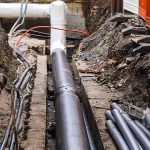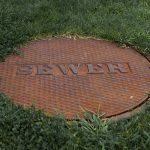Troubleshooting Common Grease Trap Problems
Maintaining a functional grease trap is essential in commercial kitchens, preventing costly plumbing issues and ensuring compliance with government regulations. Clarence Valley Septics understands the challenges businesses in the hospitality industry face, and we’re here to provide practical advice on addressing common grease trap problems. This article will examine common grease trap related issues such as slow drains, unpleasant odours, and backups, offering insights into potential causes along with solutions. We’ll also help you determine when professional intervention is necessary.
The Importance of Grease Traps
Grease traps are designed to intercept fats, oils, and greases (FOG) from wastewater before they enter the sewer system. These substances can solidify and accumulate, causing blockages and environmental damage. Blockages caused by FOG contribute significantly to sewer overflows, which can lead to environmental contamination and public health risks. Regular maintenance of grease traps is crucial to prevent these issues.
Slow Drains: A Sign of Accumulation
One of the most common signs of a malfunctioning grease trap is slow drainage. This issue arises when the trap becomes overloaded with FOG, restricting the flow of wastewater. The buildup gradually reduces the effective volume of the trap, leading to slower drainage rates. This is a clear indication that the trap requires cleaning.
- Potential Causes: Excessive FOG entering the trap, infrequent cleaning schedules, and improper trap sizing.
- Troubleshooting Tips: Ensure regular cleaning is performed according to the trap’s capacity and usage. Consider increasing cleaning frequency during peak business periods. Check for any obstructions in the inlet or outlet pipes.
Grease Trap Odour: Addressing Unpleasant Smells
A foul odour emanating from the grease trap is another common complaint. This issue stems from the decomposition of trapped organic matter, producing noxious gases. This is a serious issue that can negatively impact a business, especially for those in the food service industry.
- Potential Causes: Infrequent cleaning, inadequate ventilation, and the presence of stagnant water.
- Troubleshooting Tips: Schedule more frequent cleaning to remove decomposing matter. Ensure proper ventilation around the trap. Consider using enzyme treatments to break down organic waste and neutralise odours.
Grease Trap Backup: Preventing Costly Overflows
Grease trap backup is a serious problem that can lead to significant disruptions and costly repairs. This occurs when the trap becomes completely overwhelmed, causing wastewater to overflow into the kitchen or surrounding areas. This is a critical issue and should be addressed immediately.
- Potential Causes: Severe accumulation of FOG, blockages in the outlet pipe, and structural damage to the trap.
- Troubleshooting Tips: Immediately cease operations to prevent further wastewater flow. Contact a professional like Clarence Valley Septics for emergency cleaning and inspection. Avoid attempting to clear the blockage yourself, as this can exacerbate the problem.
Clogged Grease Trap: Clearing Obstructions
A clogged grease trap is often the root cause of many other issues. The accumulation of solid waste, food particles, and FOG can create stubborn blockages that impede wastewater flow.
- Potential Causes: Failure to remove solid waste from the trap, improper disposal of food scraps, and the use of inappropriate cleaning agents.
- Troubleshooting Tips: Regularly remove solid waste using a skimmer or strainer. Ensure food scraps are disposed of properly. Avoid using harsh chemicals that can solidify FOG and damage the trap.
Grease Trap Troubleshooting: A Step-by-Step Approach
For effective grease trap troubleshooting utilise a systematic approach. Start by identifying the specific problem, such as slow drains or odours. Then, consider potential causes and implement appropriate solutions, as outlined in this article. Regular inspections and maintenance are also crucial for preventing future issues.
- Step 1: Identify the problem and assess its severity.
- Step 2: Check for visible obstructions and remove any debris.
- Step 3: Evaluate the cleaning schedule and adjust as necessary.
- Step 4: Consider professional inspection and cleaning if issues persist.
Grease Trap Repair: When to Call a Professional
While some grease trap problems can be addressed with routine maintenance, others require professional intervention. Structural damage, severe blockages, and persistent odours are signs that a professional is needed. Clarence Valley Septics provides comprehensive grease trap services, ensuring that your system operates efficiently and in compliance with regulations.
- Signs You Need Professional Help: Structural damage, persistent odours, frequent backups, and severe blockages.
- Professional Services: Comprehensive cleaning, structural repairs, and expert advice on maintenance schedules.
Common Grease Trap Problems – In Conclusion
Addressing common grease trap problems requires a proactive approach. Regular maintenance, timely cleaning, and professional intervention when necessary are essential for preventing costly disruptions and ensuring compliance. By understanding the causes and solutions to issues like slow drains, odours, and backups, businesses in the hospitality industry can maintain a functional and efficient kitchen.
Contact Clarence Valley Septics Today
Don’t let grease trap problems disrupt your business. Contact Clarence Valley Septics today for professional grease trap cleaning, repair, and maintenance services. Our experienced team can help you maintain a clean and efficient kitchen, ensuring compliance with all regulations. Phone us on +61 2 6645 3100 or send us a message for a free consultation.


